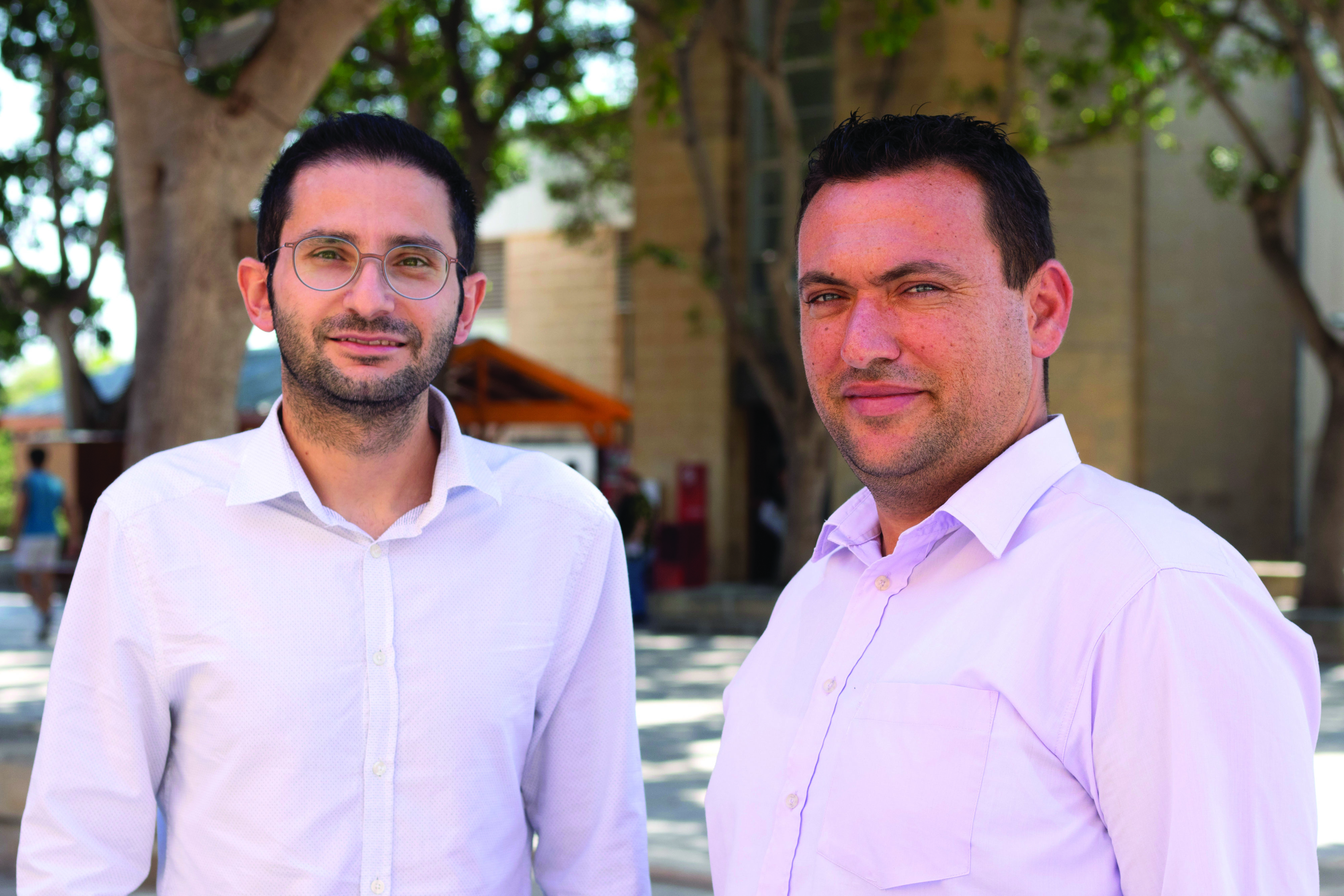One of the largest citizen science projects in Malta, Spot the Jellyfish has helped record many interesting discoveries about marine life. But as the project grows, the team must expand their technology to cope with the influx of data. Prof. Alan Deidun, Prof. John Abela, and Dr Adam Gauci speak to Becky Catrin Jones about their latest developments.
For Prof. Alan Deidun, there is no such thing as a slow day. As the lead scientist on one of the longest running citizen science projects in Malta, Spot the Jellyfish, every day brings the ping of a new notification, a recent sighting, or a call to engage with the community about the multitude of species in Maltese waters.

Photo by James Moffett
Spot the Jellyfish was born over 10 years ago with an invitation to citizens and tourists to add a side of marine biology research to their day at the seaside. Beachgoers, divers, and water sport fanatics are encouraged to document the details of any jellyfish sightings (or lack thereof) on the Spot the Jellyfish website and social media pages, along with photos.
The campaign has been hugely popular, with more than 4,000 verified reports to date. And the results at such a scale allowed the team an insight into the more subtle nuances of jellyfish appearances and movements around the Mediterranean. The team have produced a massive number of scientific papers based on the images, recording unusual sightings or how the trends of jellyfish appearances are changing over time.

‘Ninety percent of jellyfish sightings in the Mediterranean come to us,’ remarks Deidun about the project’s success. There is no doubt that this is thanks to his efforts engaging people on social media and chatting to community groups.
In too deep
The project is running into some major challenges. There are more people than ever reporting jellyfish sightings all around the coasts of Malta and Gozo — averaging to one jellyfish sighting a day. The problem is that most submissions are not through the dedicated website but through the Spot the Jellyfish social media pages or personal messages. All these submissions must then be manually uploaded to the website. Deidun was under pressure to keep on top of all the submissions.
‘Each submission needs to be validated, which obviously takes a lot of time,’ Deidun remarks of the process. It was time that the project branched out in a new direction. Was there a way that he could speed up this system?
The power of AI
Enter Dr Adam Gauci and Prof. John Abela from the Department of Computer Information Systems at the University of Malta. Gauci, a PhD student of Abela at the time, was sitting in the Department of Geosciences alongside Deidun while working on his studies. Gauci and Deidun had worked together before on cross-disciplinary projects, and it seemed that this could be another great opportunity to merge paths. ‘It was certainly a case of ‘right place, right time!’ Gauci says.
Using Gauci’s background in artificial intelligence (AI) and under the supervision of Abela, maybe they could find a way to build an algorithm that could identify and record the jellyfish, without needing extra, human expert validation?
‘First, we focused on the five most commonly reported jellyfish,’ Gauci recalls. These five species: the mauve stinger (Pelagia noctiluca), fried egg jellyfish (Cotylorhiza tuberculata), box jellyfish (Carybdea marsupialis), by-the-wind sailor (Velella velella), and salps (Salpidae) made up the bulk of submissions from around the island and had the greatest number of clear images. Taking 1,000 images, each one labelled with the jellyfish species in the photo, they began training a tailor-designed Convolution Neural Network (CNN) to recognise individual features.
Neural networks are computer algorithms that can learn by processing information. By feeding data into the network, the algorithm can start to recognise patterns, which can then be applied to new information. The more data used to train the algorithm, the more accurate it can become.
To be able to correctly identify a jellyfish, the team needed a selection of training pictures that captured each species in a variety of locations, positions, and conditions. This was no mean feat. Photos taken from the beach might not be in short supply, but they needed a balance of images from above and below the water and with different lighting to develop a robust algorithm ready for this challenge. Often, while the jellyfish was the focus of the image, it did not occupy the whole frame. In these cases, the algorithm also needed to be able to pick out the jellyfish amongst the sea of blue pixels.
The fourth industrial revolution
The team managed to produce a highly accurate algorithm capable of recognising these five most common jellyfish with a lot of hard work and plenty of citizens’ jellyfish pictures. ‘The idea is to put this on the website, so that people can upload their own photos, and the algorithm will tell them what it is straight away,’ Gauci says. Not only will it confirm the jellyfish species, but it can provide links to more information, such as how to treat a potential sting. Geotagging, inherent within digital images, also means that the team can see exactly where the photo was taken, helping to accurately pinpoint the jellyfish’s location.
As more images are collected, the team hopes to expand the number of jellyfish that can be automatically classified by the algorithm. A sister project, Spot the Alien Fish, is also set to benefit from some AI – although the team still needs to find enough clear images to train the network. Gauci hopes that the system will be turned into a smartphone app to allow citizens to instantly verify the jellyfish species in front of them.
‘We’re in the midst of the fourth industrial revolution,’ Deidun says. ‘This is a great example of how smart systems and AI can be used for citizen science purposes.’
Focus on the future
Freeing up this validation time means that Deidun and his team can focus their research on jellyfish movements and population fluctuations. This is important when monitoring invasive jellyfish species in Maltese waters. While only five such species have been recorded in Malta so far, their impact can be devastating – destroying habitats for native species or interfering with aquaculture systems. In some cases, large blooms of jellyfish have even shut down power stations.
Deidun and his colleagues map jellyfish trends to predict the types and numbers of jellyfish throughout the year. With over 10 years of data under their belt, they have plenty of experience in understanding how changing seasons and temperatures might affect the species found in the seas. ‘We are sitting on datasets that are really valuable,’ says Deidun.
The Spot the Jellyfish website has helped the team record really rare events that would easily have been missed by a single research group. Just this year, thanks to lockdown jellyfish spotters making the most of their time at the beach, the team received reports of a very rare jellyfish bloom which had not been seen around Malta since 2012. The bloom only lasted one week, but thanks to the vigilance of the spotters, they were able to record it and hope to publish a paper documenting it later in the year.
‘This is the beauty of this system,’ says Deidun. ‘To keep track of such events, you really need an army of citizen scientists.’ And luckily enough, it seems like he has one.
Author
-
Becky Catrin Jones is a freelance writer and science communicator based in London, UK. After completing her PhD in cell biology, she moved away from academia and into communication to spend more time talking about and sharing science. Becky has written for THINK since 2017, and managed a number of other blogs including for the international Pint of Science festival. Although biomedical research is a topic close to her heart, she is excited about all areas of research, and has written on subjects from cheese to concrete.
View all posts





Comments are closed for this article!